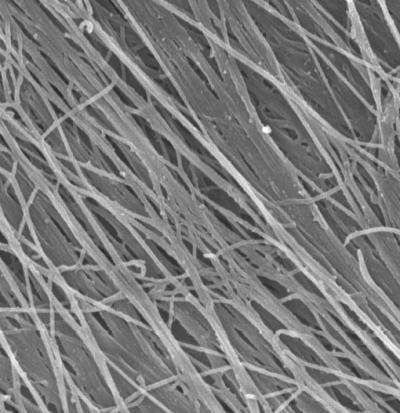New biological scaffold offers promising foundation for engineered tissues

Our cells don't live in a vacuum. They are surrounded by a complex, nurturing matrix that is essential for many biological functions, including growth and healing.
In all multicellular organisms, including people, cells make their own extracellular matrix. But in the lab, scientists attempting to grow tissue must provide a scaffold for cells to latch onto as they grow and proliferate. This engineered tissue has potential to repair or replace virtually any part of our bodies.
Typically, researchers construct scaffolds from synthetic materials or natural animal or human substances. All have their strengths and weaknesses, but no scaffolds grown in a Petri dish have been able to mimic the highly organized structure of the matrix made by living things, at least until now.
Feng Zhao of Michigan Technological University has persuaded fibroblasts, cells that makes the extracellular matrix, to make just such a well-organized scaffold. Its fibers are a mere 80 nanometers across, similar to fibers in a natural matrix. And, since her scaffold is made by cells, it is composed of the same intricate mix of all-natural proteins and sugars found in the body. Plus, its nanofibers are as highly aligned as freshly combed hair.
The trick was to orient the cells on a nano-grate that guided their growth—and the creation of the scaffold.
"The cells did the work," Zhao said. "The material they made is quite uniform, and of course it is completely biological."
Stem cells placed on her scaffold thrived, and it had the added advantage of provoking a very low immune response.
"We think this has great potential," she said. "I think we could use this to engineer softer tissues, like skin, blood vessels and muscle."
More information: Advanced Functional Materials DOI: 10.1002/adfm.201303460/abstract
Journal information: Advanced Functional Materials
Provided by Michigan Technological University

















